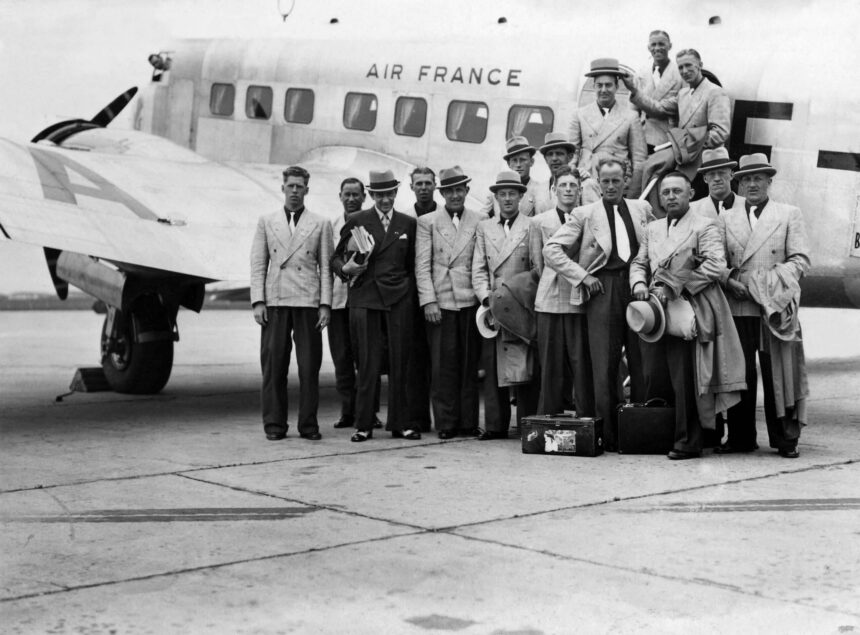This is the third in a series on The Athletic looking back at the winners of each World Cup, from Uruguay in 1930 through to Argentina in 2022. Italy had won the World Cup in 1934. Four years later, they retained the trophy.
Introduction
Is 1938 the least fabled World Cup? 1930 was notable as the first edition, 1934 is often cited because of the influence of Benito Mussolini, while the ones in 1950, 1954 and 1958 have all gone down in history for different reasons. The World Cups since then have all been widely televised, so their greatest moments have been replayed thousands of times. But besides being the last tournament for 12 years due to the Second World War, what do any of us know about the 1938 finals?
Advertisement
Well, France played host, partly in recognition of its central role in creating the tournament in the first place. The South American nations believed it was their turn to stage the World Cup though, and therefore neither Uruguay nor Argentina entered.
Spain were also absent, owing to civil war. Austria had qualified, but then the country was annexed by Adolf Hitler and therefore they were forced to withdraw, with some of their players ordered to represent Germany instead. That left a spare slot in the tournament, and while FIFA begged England to take up the 16th and final place, they continued to stay away, leaving just 15 teams in a straight knockout tournament. Sweden got a bye.
Sweden arrive for an easy ride into the quarter-finals (Staff/AFP/Getty Images)
Italy were, of course, the defending champions. But there had been widespread scepticism about the legitimacy of their victory four years earlier, and triumphing away from home soil was set to be much more difficult.
Still, the Italians hadn’t lost since November 1935, a run which also included winning the Olympic title in 1936. They were the side to beat.
The manager
Vittorio Pozzo was still around from four years beforehand, and hyped up his team ahead of this tournament by declaring they were better than the 1934 version.
Pozzo was still regarded as a fine tactician and also an excellent motivator; ahead of the semi-final against Brazil, he learned the South Americans had booked up the only plane from Marseille to Paris for the final, so visited their training base, started an argument about it, and returned to his squad urging them defeat a group of players who were lounging around in the belief they’d be in that final.
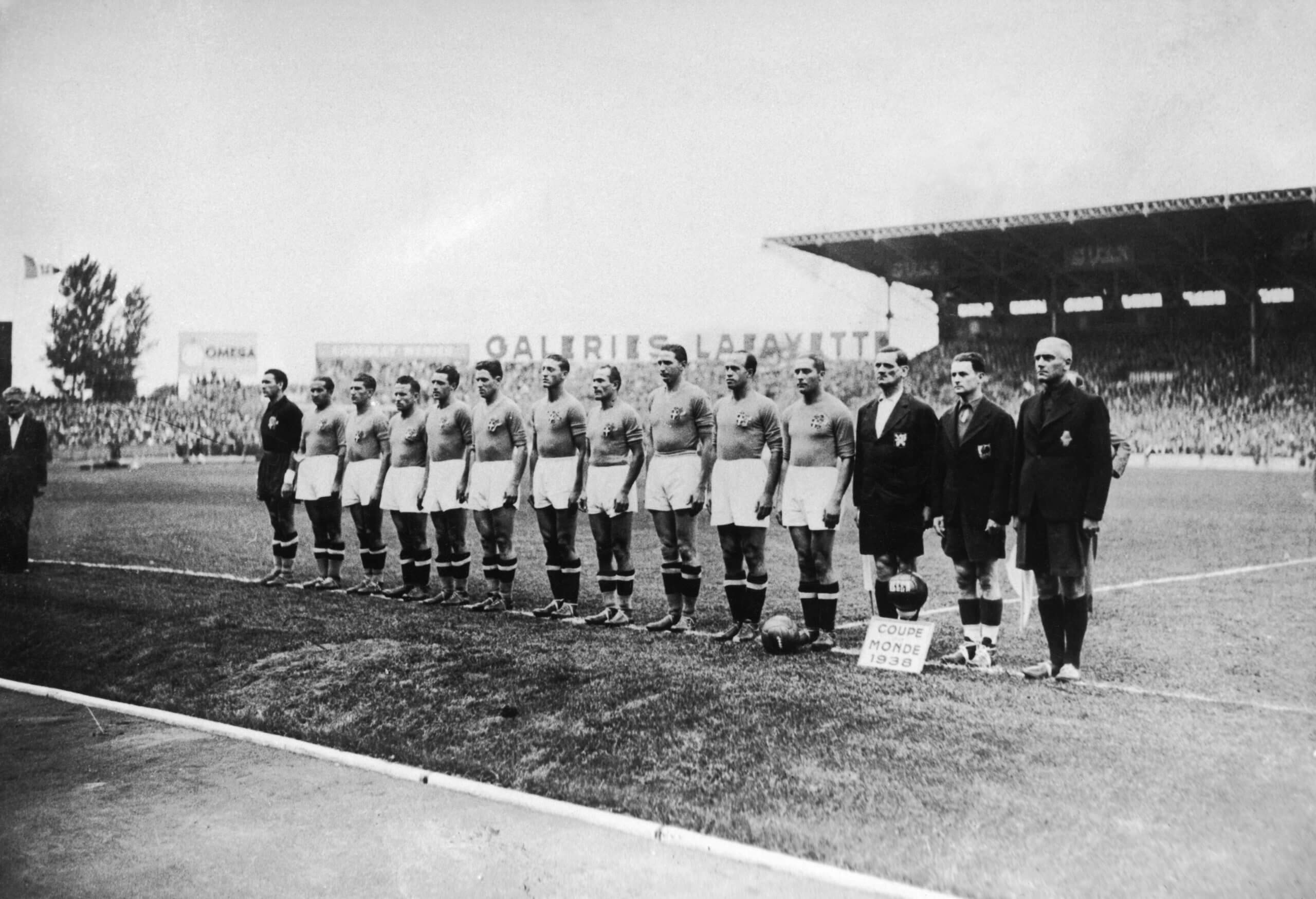
The Italian team in 1938 with Pozzo, far left (Keystone/Hulton Archive/Getty Images)
There were still reports that Mussolini was interfering in Pozzo’s business. As well as ordering the side to perform a fascist salute before matches, he also insisted that Italy played in black shirts (for the only time in their history) when the hosts wore blue for their quarter-final meeting.
Most strangely, Mussolini initially insisted that Pozzo played the immobile veteran Eraldo Monzeglio rather than highly rated Udinese defender Alfredo Foni. This was not a tactical decision: it was simply because Monzeglio had a close relationship with Mussolini, acting as a personal football and tennis coach for the dictator’s children.
Following an intervention by the head of the Italian FA after Monzeglio’s performance against Norway in the opener, Pozzo was allowed to pick the side he wanted for the rest of the tournament, and went for Foni.
Tactics
It’s difficult to find much evidence that Italy’s formation had changed to any great degree since their victory four years beforehand. But this was a more technical side, based around slick passing and clever interplay in the final third.
The side was also more Italian, although in Michele Andreolo, who had starred in Uruguay’s 1935 Copa America victory, they did have another South American in the crucial centre-half role played by Argentine-born Luis Monti four years beforehand.
Advertisement
Still, this time the wingers were Italian-born. Right-sided Amedeo Biavati was a constant source of crosses from that flank, while Gino Colaussi played on the left, and provided more of a goalscoring threat. He scored one apiece in the quarter-final and semi, then two in the final, so his late decision to postpone his wedding in order to participate was very much justified.
Key player
The star man from four years beforehand, Giuseppe Meazza, was still dictating play in midfield (one of only four survivors from 1934, along with backup goalkeeper Guido Masetti, the aforementioned Monzeglio and attacking midfielder Giovanni Ferrari). But he was now playing second fiddle.
Silvio Piola had made his debut a year after Italy’s 1934 success, and won the Capocannoniere as Serie A’s top goalscorer when his Lazio side claimed the league title in 1936-37.
Piola was a proper all-round centre-forward, famed for his goalscoring exploits but also considered to be technical enough, and selfless enough, to have played in midfield, and was excellent at encouraging his fellow attackers to break beyond him, varying his position and playing clever forward passes.
He scored five goals in this tournament, almost all of them crucial, including the extra-time winner in the opener against Norway with a close-range finish from a rebound, and the second and third in the 3-1 quarter-final defeat of France after the hosts had brought it back to 1-1, both of them classic striker’s goals from Biavati’s right-wing crosses.
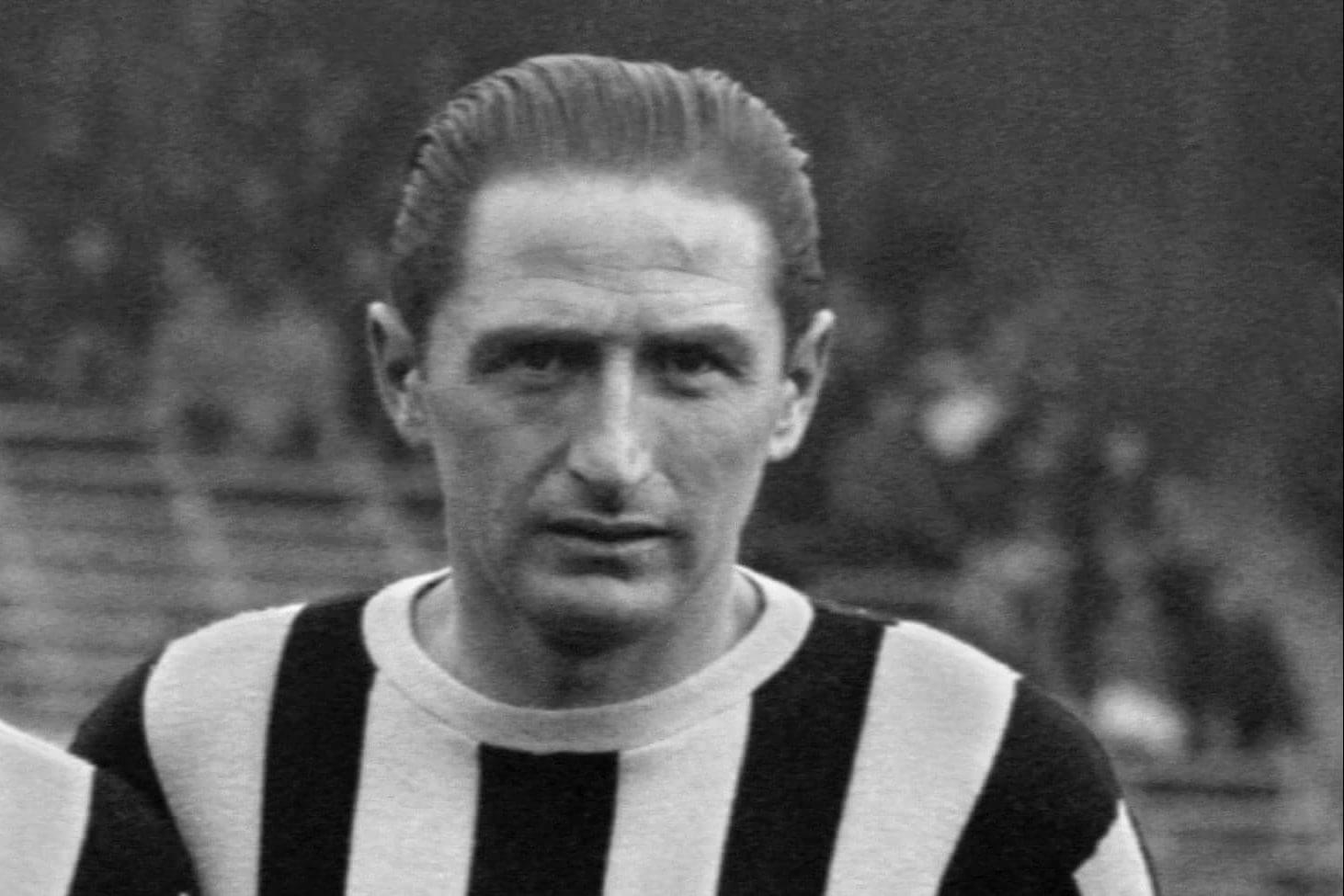
Italy’s star striker Silvio Piola in 1946 (Staff/AFP/Getty Images)
Then, in the final against Hungary, he was both orchestrator and finisher of the passing move which put Italy 2-1 up, before scoring the clincher to make it 4-2, with Biavati again supplying the assist from the right. He also received criticism for making the most of a challenge from Brazil centre-back Domingos da Guia in the semi-final, winning a penalty, in a time before the concept of ‘simulation’ was commonplace.
Advertisement
Piola remains the all-time leading goalscorer in Serie A with 274 goals, 24 clear of Francesco Totti. That status is particularly impressive considering he lost three seasons because of the war, and spent another in Serie B midway through his career.
His glory days were spent with Lazio, Torino and Juventus, bookended by spells with Pro Vercelli and Novara, who are both playing in third-tier Serie C this season.
Those last two clubs, located 15 miles apart in the corridor between Turin and Milan, slightly confusingly both play at grounds named Stadio Silvio Piola. That’s a measure of his influence.
The final
Italy defeated Hungary 4-2 in a contest which was perhaps not as thrilling as the scoreline would suggest — some reports note the lack of rhythm in the game, partly due to Italy’s willingness to sit deep and play primarily on the counter-attack, which wasn’t a typical approach in the 1930s. But there’s no doubting the effectiveness of that approach in this final.
This is the first World Cup final where decent, decipherable television footage of the key moments is available, and it’s clear Piola was the star.
He scored two goals, but he also created the opener for left winger Colaussi with a deep cross from the right, prompting a fine volleyed finish. Hungary equalised shortly afterwards, a roughly similar goal from winger Pal Titkos. But Piola put Italy 2-1 ahead — more on that shortly — and then Colaussi scored his second, this time by running in behind to finish smartly, making it 3-1.
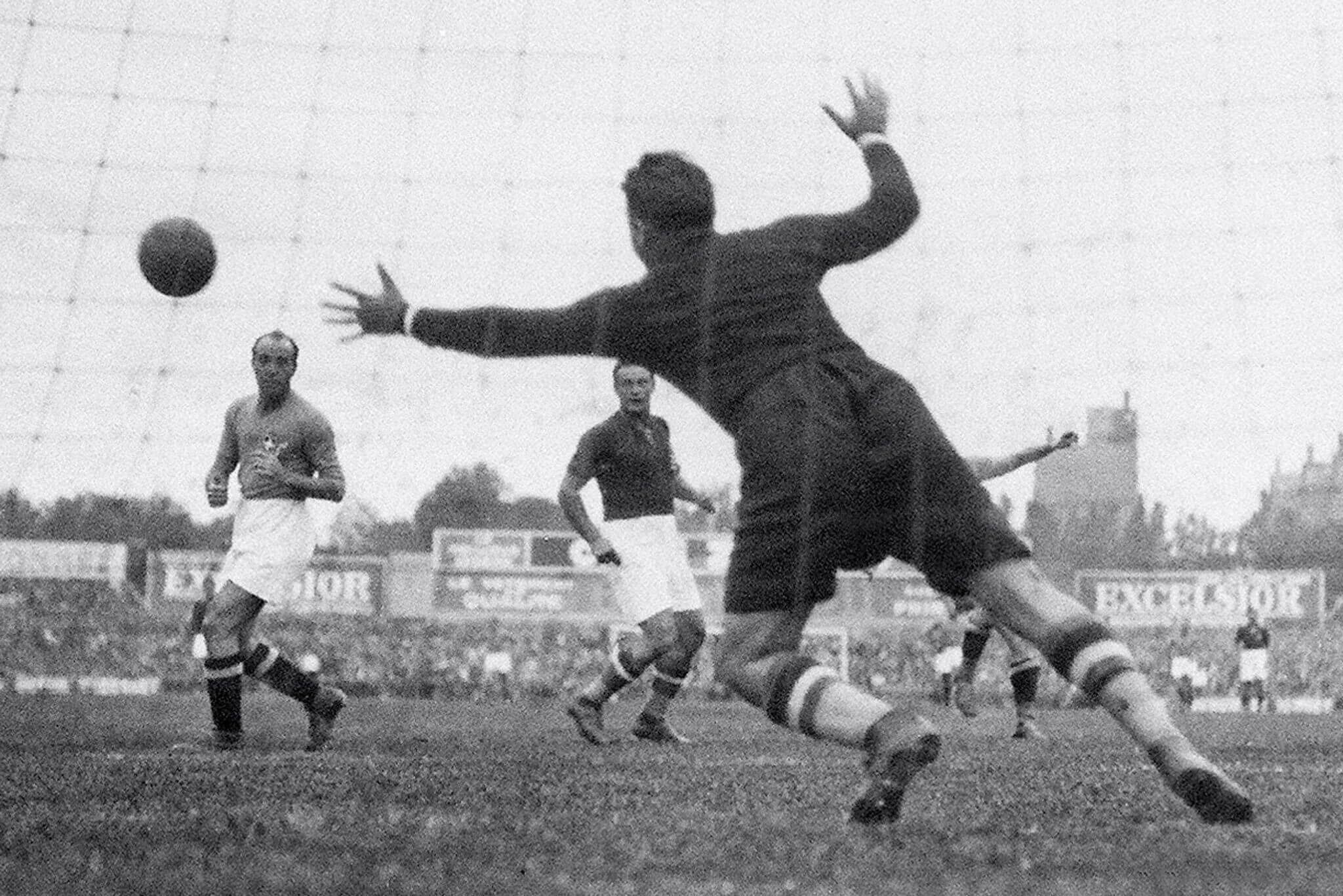
Italy’s Giovanni Ferrari, left, has a shot (Staff/AFP/Getty Images)
After the break, Gyorgy Sarosi turned home a right-wing cross to halve the deficit, but then Italy replicated that move, with Biavati teeing up Piola for the third time in the tournament — 4-2, and Italy had retained the World Cup.
The defining moment
You can take either of Piola’s two goals in the final.
His second, late on, clinched the victory. But his earlier goal put Italy into a 2-1 lead, and was a marvellous example of their interplay which impressed throughout the tournament. Piola slipped in Giovanni Ferrari, the inside-right who found himself in the left channel, seemingly through on goal. But Ferrari surprisingly opted to switch play over to Meazza on the right. That was probably a terrible decision, in fairness, but Meazza responded by faking a shot to fool a defender, then teed up Piola to score.
In the context of 1930s football, it’s a genuine beautiful piece of combination play.
You might be surprised to learn…
Italy were fortunate that they avoided facing either of Brazil’s best two strikers in the semi-final. The reason is somewhat complex.
Brazil’s first-choice centre-forward was the legendary Leonidas, who finished as the tournament’s top goalscorer with seven goals. But their quarter-final with Czechoslovakia had gone to a replay, which was played just two days before their semi against Italy.
Advertisement
Leonidas had been the only player to feature in both matches against the Czechs, even though he’d been nursing an injury from the opening game with Poland. He was therefore omitted from the side to face Italy, which prompted a huge backlash back home, amid reports that Adhemar Pimenta was simply resting him for the final.
That final never arrived for Brazil, of course — but Leonidas played and scored in the third-place play-off, helping to legitimise the rumour he was being saved for a subsequent game.
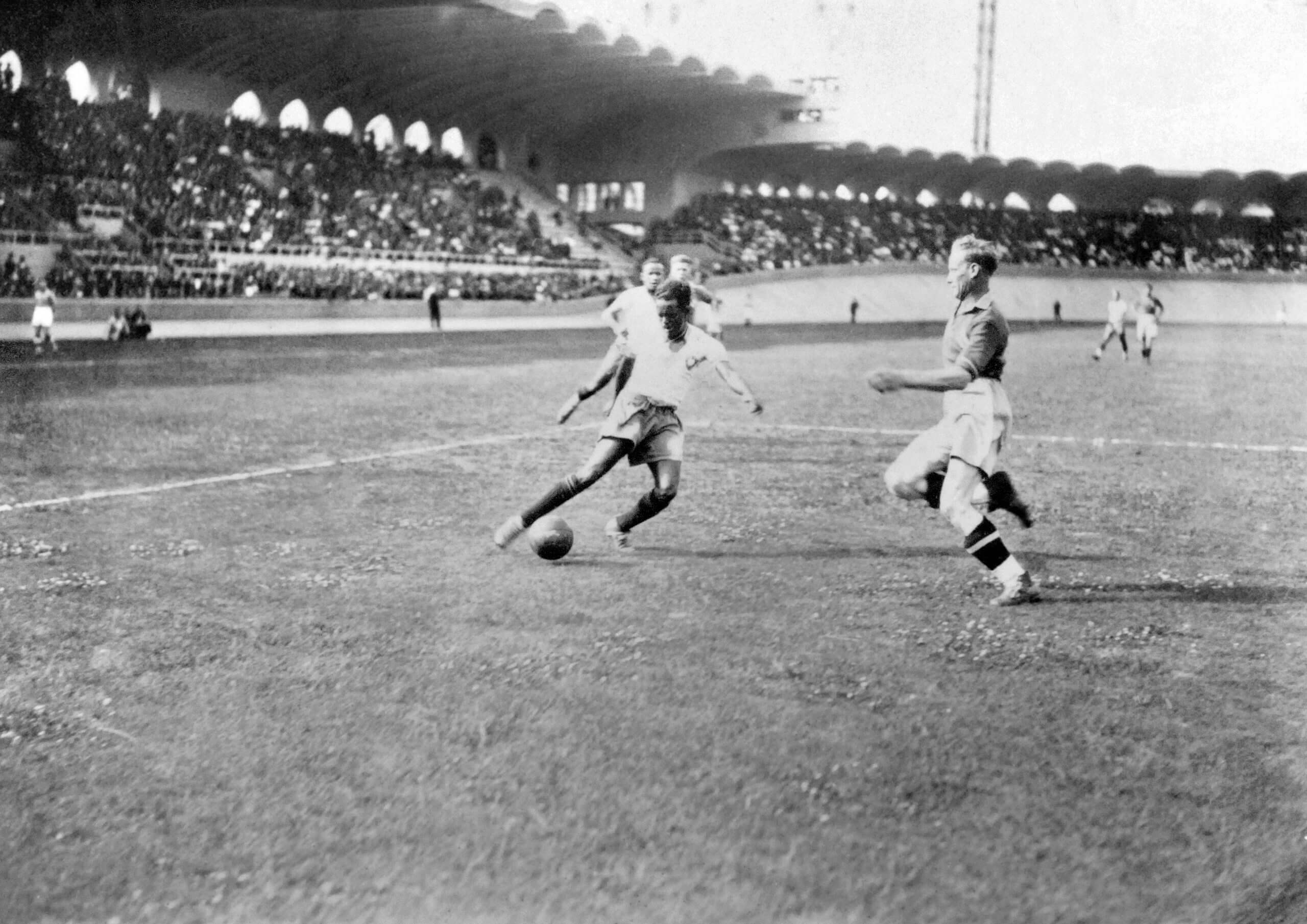
Leonidas with the ball in the third-place play-off against Sweden (Staff/AFP/Getty Images)
That should have meant Brazil using Leonizio Fantoni, the forward who was known in Italy as Fantoni III, because he had joined Lazio in 1934 to play alongside his brother and cousin.
Fantoni III had taken dual citizenship in Italy and, as referenced by Pozzo when he called up foreign-born players (“if they can fight for Italy, they can play for Italy”) this meant the possibility of conscription. Indeed, while his team-mate and cousin, Fantoni II, had also been called up by Pozzo for Italy’s football team, Fantoni III was summoned to serve in the army.
Fantoni III had recently married a Hungarian woman he’d met in Rome, and was also mourning the loss of Fantoni II, who had tragically died from an injury suffered in a Serie A game. He didn’t fancy going to war. Therefore, Lazio paid for him to board a ship back to Brazil. They didn’t agree to his transfer, but Fantoni III decided he wasn’t ever going to return, so started playing club football back in Brazil.
International clearance was ignored — what would Lazio, all the way across the Atlantic, do about it?
Well, nothing. But the problem, of course, came in 1938. Italy knew all about Fantoni III. They knew he’d deserted the country when called up to fight. And they knew he’d broken FIFA laws when playing in Brazil without permission from the Italian club he was contracted to.
Advertisement
And so, with no formal complaint from Italy — but it seems, a whisper and a wink — Brazil felt unable to play Fantoni III.
They instead played creative inside-forward Jose Peracio as their No 9, and offered little goal threat as Italy ran out 2-1 winners, an apparently more comfortable victory than the scoreline suggests.
Were they definitely the best side?
This time around, it’s difficult to have serious doubts about Italy’s triumph, notwithstanding the debates about whether the world’s best teams were all present at these early World Cups.
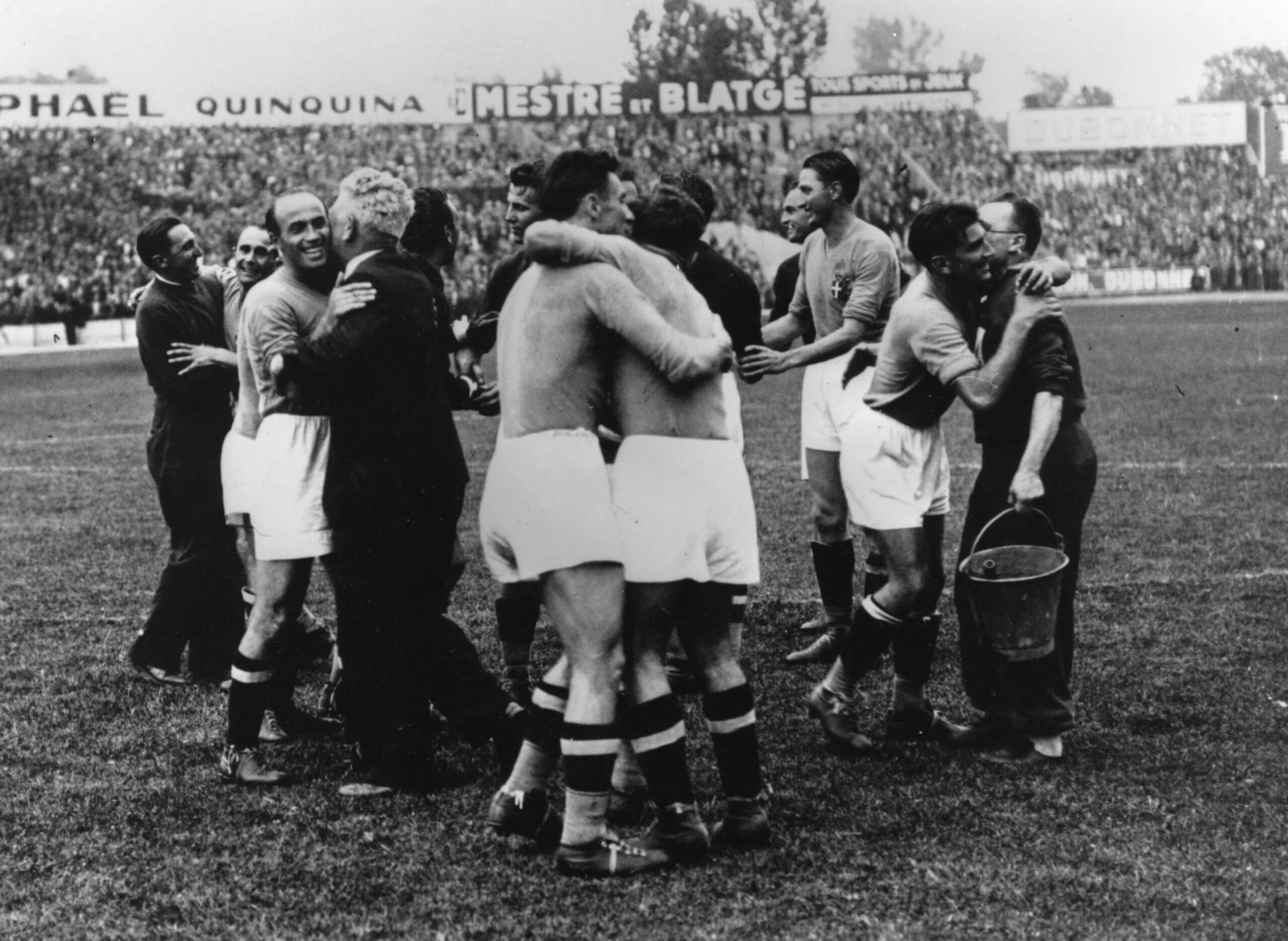
Italy celebrate deservedly winning the 1938 final (Keystone/Getty Images)
Italy certainly rode their luck in the opening round against Norway, when the opposition hit the woodwork three times, but they convincingly defeated hosts France and a good Brazil side en route to the final, then beat Hungary comfortably, and in some style.
In retaining the trophy, Italy had become accustomed to World Cup success. But, strangely, they wouldn’t appear in another World Cup knockout game for 32 years, until their run to the final in 1970.
(Top photos: Getty Images; design: Eamonn Dalton)


